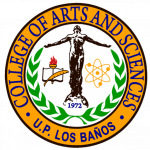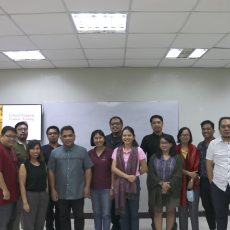As a flagship program of the College, Arts and Science Fusion focuses on the interphase between the two diverse disciplines. Its latest project, conducted last March 6, sought to fuse the science of bamboo and its artistic elements in a lecture presented by Mr. Gregorio E. Santos Jr. from Ecosystems Research Development Bureau (ERDB). The bamboo lecture, a project under the CAS Arts and Science Fusion Program, was part of several events hosted by the college to celebrate UPLB’s 109th founding anniversary.
Fostering its threefold task –to know, to create, to innovate– “Basking in the Beauty of Bamboo” exemplifies the activities that the CAS Arts and Science Fusion Program Management Committee is tasked to undertake. The current members, led by Prof. Jeremy Reuel N. Dela Cruz as program coordinator/management committee chair, are guided by the following terms of reference:
- Plan and conduct multidisciplinary activities on the arts and sciences fusion;
- Organize and coordinate college-based performances;
- Coordinate and manage the development and renovation of the Makiling Performance Garden (MPG);
- Network and collaborate with other institutions of similar endeavors.
Prior to this newly-constituted group, with some members carrying on from the preceding term, the management committee drafted this Proposed Framework of the Art and Science Fusion Program:
Fusion. As an interim framework to describe the interphase between art and science: both disciplines produce knowledge, use creativity and generate innovation. Thus, the activities will be hinged on knowledge production, creative practice, and innovative design (see illustration below).

Knowledge production means to conduct and disseminate the transdisciplinary and interdisciplinary research and discourse amongst artists, social scientists, scientists, as well as the community, toward theorising and articulating the interface between art and science through academic conferences and publicationss.
Creative practice refers to the use of artistic, resourceful and imaginative approaches in the different project areas.
Innovative design denotes developing technologies and products that illustrate the fusion of art and science.
Tracts. The fusion of art and science, for purposes of the college, will be located within UPLB’s niche disciplines, namely, agriculture, biotechnology and environment (albeit not specific to the CAS); transdisciplinary and interdisciplinary tracts will be adopted to connect the different disciplines in the college and to link them with the academic, research and extension agenda of UPLB. These tracts are: Environment, Cultural Heritage, and Technology.
Projects. The Art and Science Fusion Program will have three clusters of projects as defined by the overlaps of the environment, cultural heritage, and technology tracts. These are as follows:
- Environmental humanities cluster cover projects on culture and development, ecology, folklore, creative output related to the environment, public policy, etc.
- Sustainable futures cluster cover projects on ecological design and technologies, eco-friendly products, alternative livelihood, sustainable community, etc.
- Creative technology cluster cover projects on the interphase of creativity and technology such as creative computing, digital sound production, digital humanities, digital heritage, digital technologies, data analysis and 3D visualisation, creative industries and so on.
The following illustrates the proposed framework for the program:

The environmental humanities, sustainable futures and creative technologies (including digital humanities) –emerging fields that are already part of the research agenda and, in some cases, degree programs of the major research and innovative universities in Europe, US and Australia– can be the new research and growth areas for the College of Arts and Sciences. In due time, it can be adopted by directly related departments or institutes and perhaps developed as a degree program.
Listed among the activities slated by the preceding committee, the Bamboo heritage and creative enterprise served as the opening salvo for 2018. The following plans manifest the Arts and Science Fusion Program’s vision on this enterprise: The sustainability of bamboo, its role in Philippine cultural heritage and its development as a creative enterprise will be interrogated and explored. It will be developed as a long-term UPLB public service project that will cover art, heritage, conservation and enterprise to support local communities. It will tap, among many other agencies, the Bambusetum of the Environmental Research Development Bureau of the Department of Environment and Natural Resources.



